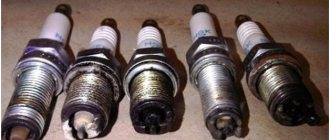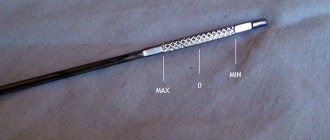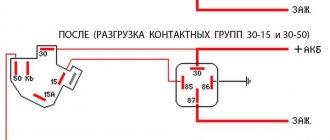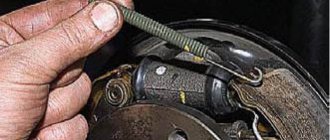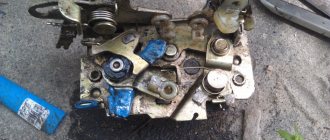About the engine range
The manufacturer gave the line 4 power unit options. The engine capacity of the Nexia in production before 2008 was 1.5 liters with a different number of valves: these are sixteen valves on the A15MF product, and 8 were installed on the G15MF.
The situation changed in 2015, when the developers came up with a new eight-valve model A155MS with the same volume. Somewhat later, drivers could choose another modification - F16D3. Volume increased to 1.6 liters. How are the motors different?
Review of faults and methods for repairing them
The A15SMS naturally aspirated in-line engine with a single-shaft head has several “diseases”:
replacement of IAC "Maslozhor"1) oil scraper rings are stuck 2) wear of oil scraper seals1) decarbonization or replacement of rings 2) replacement of capsHigh fuel consumption1) wear of spark plugs 2) clogged fuel system1) replacement of spark plugs 2) cleaning of injectors, hoses, pump replacement3) cleaning the throttle
Repair A15SMS
The engine can hardly be called economical, but it can be easily repaired on its own and does not cause problems for the owner.
Interesting features of the Daewoo Nexia engine
In this practical collection, adapted for Russian conditions, the Daewoo Nexia engine labeled G15MF was endowed with a power of 75 horsepower and a torque of 100 Nm.
In the restyled version, drivers were able to experience greater capabilities, enjoying 80 hp. With.
The variant under consideration had similar features to the Opel C16NZ, but this phenomenon is apparent. What makes it different?
- The eight-valve engine has a different cylinder diameter and a different piston group.
- The crankshaft is of a different cast, made to drive an oil pump.
- In the cylinder head, a metal fitting is used as a plug; there is a difference in the cylinder head and the combustion chamber.
The main advantage of the Nexia engine is that the driver can accelerate to 175 km/h per hundred kilometers in just 12 seconds. In the city, fuel consumption is approximately 9 liters. Dynamic driving dictates its own rules and higher consumption. By avoiding overheating, not overloading, and changing the oil on time, you can ensure that the unit will serve for a long time and flawlessly, revealing its full potential. Filling with a surrogate lubricant and not calling in for maintenance depending on the condition of the machine is a sure way to cause defects that lead to expensive repairs. What about other powertrain options?
Nexia engine: photos, characteristics, what were installed
Daewoo Nexia was on the assembly line from the late nineties to 2021 and during this time there were only 4 engines in the line of engines.
The engines on the Nexia, like the car itself, have German roots, namely Opel ones and belong to the General Motors concern. In this article you will find out which engines were installed, which engine is better, as well as their photos and characteristics. In general, the engines installed on the Nexia are quite unpretentious and reliable, taking into account minor shortcomings. For example, the USR valve slightly suffocates the engine at low end and contaminates the engine intake, reducing its service life. Therefore, to avoid this, many turn off the valve. Another drawback of the engine is its leaking valve cover gasket, you can read these articles on our website.
The average service life of a Daewoo Nexia engine without interfering with its operation is approximately 200-250 thousand kilometers, which is quite a good result.
Brief educational program on F16D3
The unit is a Nexia engine, 16 valves of which allow you to freely travel along the highway at a decent speed. The manufacturer equipped it with a resource of 250 thousand km. The nuance of this device is the likelihood of valve failures when the timing belt breaks: at high crankshaft speeds, considerable damage is expected, because the pistons will hit the valves. This engine is also installed on Chevrolet Cruze, Lacetti, Aveo. The design is based on distributor fuel injection. What does this give to the car owner?
- Extends engine life.
- Good fuel economy.
- Exhaust gases are less toxic.
- Failures rarely occur when driving in extreme conditions: rain, ice.
The disadvantages include the complexity of the installation scheme, expensive repairs and replacement of electronic elements, and the need for repair work to be carried out only by highly qualified specialists. What problems can occur on the road?
Z20S Specifications
After a significant stake went to the Americans, much changed in its activities. In particular, the principles of creating and implementing engines have changed. The following requirements were imposed on Daewoo engines produced since the early 00s:
- High environmental friendliness;
- Excellent technical functionality;
- Ergonomic creation;
- Economical operation;
- Ease of maintenance.
Perhaps one of the typical internal combustion engines (ICEs) that fits all the summarized requirements is the Z20S. This unit is a high-quality engine running on diesel fuel. Distinctive features of the Z20S engine are:
- Availability of a turbocharger;
- Improved and more reliable direct injection system - Common Rail;
- Reinforced design of the cylinder head, pistons, flywheels, cylinders and connecting rods;
- Predominant use of forged elements in the design of internal combustion engines;
- Flooding the engine with quality attachments.
Common faults
Products with eight valves often leak oil due to a defective valve cover. You should not drive on uneven roads when this is not justified: the right “mount” of the Nexia 8 engine may break, and auto mechanics advise keeping this area under close control. The CV joints do not suffer as long as their covers are intact and intact. It is difficult to understand from the plastic case what condition the hinge is in. If moisture gets under the cover, it fails. Every time, after driving 70 thousand km, it is worth carefully inspecting this area. What problems can be expected from a sixteen-valve engine?
- Toxicity standards have been reduced due to exhaust gases entering the intake tract and burning out, but soon carbon deposits form on the valves, and the lubricant loses its purpose, and the engine begins to draw in exhaust.
- Poor quality fuel leads to clogging of the valve and the engine itself.
- A lubricant deficiency can be recognized by the clicking sound of the hydraulic compensator and valves. Loads on the power part will inevitably cause breakdown and impossible repair of the engine.
Many car enthusiasts use tuning techniques to improve dynamics and remove the catalyst and change the exhaust. These two main factors prevent the Nexia engine from functioning normally. Nexia should be serviced on time, without engine problems, then any mileage on different routes can be carried out for many years.
Maintenance schedule A15SMS 1.5 l80-86 l. With.
It is necessary to replace the consumable parts and elements included in the A15SMS engine, and working fluids in the following order:
- attachment/timing belts must be replaced after 50,000 km;
- The thermal clearances of the valves need to be adjusted at the turn of 30 thousand mileage;
- The manufacturer provides for purging/flushing the crankcase ventilation every 20 thousand km;
- the Daewoo manufacturer recommends replacing the engine oil/filter after 7,500 km;
- It is recommended to update the fuel filter after 40 thousand mileage;
- according to the manufacturer, change the air filter annually;
- after packing the coolant from the factory, antifreeze loses effectiveness after 40 thousand km;
- engine spark plug life is 20 thousand mileage;
- The intake manifold starts to burn out after 60,000 km.
Exhaust manifold replacement
Main malfunctions of power plants
Daewoo power units have a number of characteristic disadvantages:
| Characteristic disadvantages | Causes | Solution |
| Increased oil consumption | Piston ring wear Oil pump wear Leak in the motor | Replace rings Replace oil pump Replace sealing elements, tighten bolts |
| Strong knocking sound (engine is warm) | The clearances in the main bearings are larger than necessary Drive belt tension increased The torque converter is loose | Replace earbuds Adjust tension, replace if necessary Adjust bolts |
| Knock in the engine after starting | Front main bearing - increased clearance Crankshaft - increased axial clearance Hydraulic valve lifters are faulty | Replace Shaft support bearing - replace Check, replace if necessary |
| Engine heats up quickly | Thermostat is faulty | Check, replace if necessary |
| The motor takes a long time to warm up | Thermostat is faulty | Check, replace if necessary |
Most such work may require special tools, equipment, and knowledge.
List of internal combustion engine modifications
The power plant had only 1 modification - A15MF.
The G15MF is equipped with distributed injection and a distributor ignition system.
G15MF - 8-valve power unit, its power is only 75 horsepower, engine production lasted until 2002.
A15MF is a 16-valve version of the G15MF; in fact, the engines differed only in the cylinder head and attachments. The crankshaft and all elements of the CPG are absolutely identical. The new cylinder head made it possible to achieve a power of 90 horsepower. Production of the power unit began in 2002 and lasted 6 years.
Source
Reviews from car owners
If we consider the range of power units in a general sense, we can say that they are all “oil-eaters” to one degree or another. Although the engine oil consumption rate largely depends on the driving style and the quality of maintenance of the power unit. However, 300 ml of oil for every 1 thousand kilometers is the norm. It is best not to forget about the oil level and constantly measure it. It is also worth remembering the changed maintenance regulations.
Now the service interval (TO-0) is two thousand kilometers. Every 10 thousand kilometers, a thorough diagnosis of the vehicle systems is necessary. For example, after 20 thousand km, air filters, fuel filter, engine oil and spark plugs must be replaced. The weak point of 1.5-liter engines is the cylinder head gasket. Oil oozes constantly, replacing the rubber product only helps for a couple of thousand kilometers. Such problems are solved by installing a new valve cover, for example, from a Chevrolet Lanos. Reviews from real owners will tell you in detail about all possible problems, as well as about the service life of the Daewoo Nexia engine.
Resource of 1.5-liter engines
There has always been a lot of talk around Daewoo Nexia 1.5. On the one hand, the car captivated with its practicality and efficiency, on the other, it did not always provide the reliability desired by all car owners. The G15MF turned out to be especially problematic - it is capricious, does not like overheating, it is structurally simple and in some way primitive. But with proper maintenance, even 220-240,000 kilometers can be squeezed out of it.
The service life of the Daewoo Nexia 1.5 A15MF engine is already slightly higher than that of its predecessor. We can say that the manufacturer has thoroughly redesigned and improved the G15MF, making it a good power unit. But you don’t need to count on sky-high numbers here either - 280 thousand km, according to owner reviews, at best.
The A15SMS engine, which began being installed under the hood of the car in 2008, boasts approximately the same endurance. It is moderately whimsical and reliable (the timing belt has a service life of 120 thousand km, but if it breaks, the valve bends), but it lasts more than 280,000 kilometers in extremely rare cases.
Resource of 1.6-liter engine
A 1.6-liter car is most often purchased from a practical point of view: for everyday transportation or transporting small goods from one point of the city to another. No serious requirements were ever put forward for this machine. Everything the average car owner needs from Daewoo Nexia: reliability, efficiency, unpretentiousness. And if there were no serious problems with efficiency and unpretentiousness even before, then reliability until 2008 was at least a reason for controversy among car enthusiasts.
But, starting in 2008, the build quality of the model has increased significantly, and the F16D3 engine with a record rated life for a car (300,000 km) contributed to the growth of the car’s popularity and the number of units sold. We can confidently say that this is the best engine for this car, which provides the necessary level of dynamics with relatively high endurance.
Source
Engine diagram
Elements of the F16D3 electronic engine control system:
1* — phase sensor; 2 — engine intake air temperature sensor; 3* — throttle position sensor; 4* — diagnostic block; 5* — coolant temperature sensor; b* — knock sensor; 7 — intake air absolute pressure sensor; 8* — speed sensor; 9* — warning lamp for control system malfunction; 10* — mounting block of fuses and relays; 11 - battery; 12 — electronic control unit; 13zh — wheel speed sensor; 14 — ignition coils; 15* — crankshaft position sensor; 16* — control oxygen concentration sensor; 17* — spark plugs; 18
— diagnostic oxygen concentration sensor
This memory is volatile, i.e. When the electrical power is interrupted (the battery is disconnected or the wiring harness block is disconnected from the ECU), its contents are erased. The PROM stores the engine control program, which contains a sequence of operating commands (algorithms) and calibration data - settings. The PROM is non-volatile, i.e. The contents of the memory do not change when the power is turned off.
The ECU receives information from system sensors and controls actuators such as the fuel pump and injectors, ignition coil, idle speed control, oxygen concentration sensor heating element, canister purge valve, exhaust gas recirculation valve, intake tract length variable valve (on the F16D3 engine ), air conditioning compressor clutch, cooling fan.



